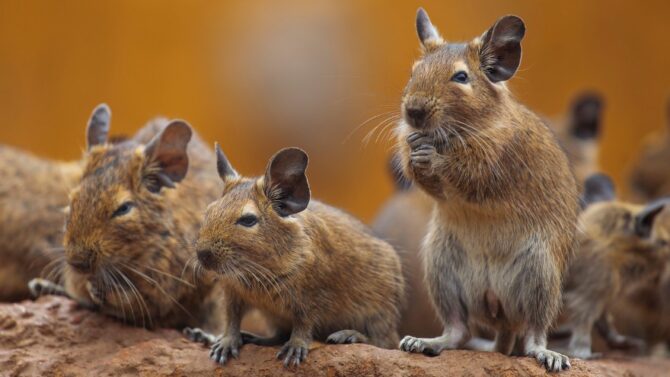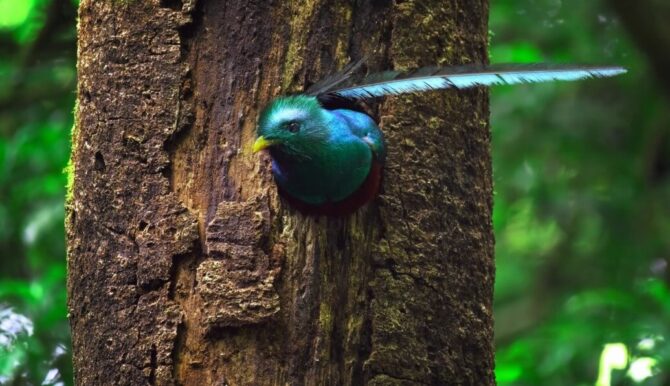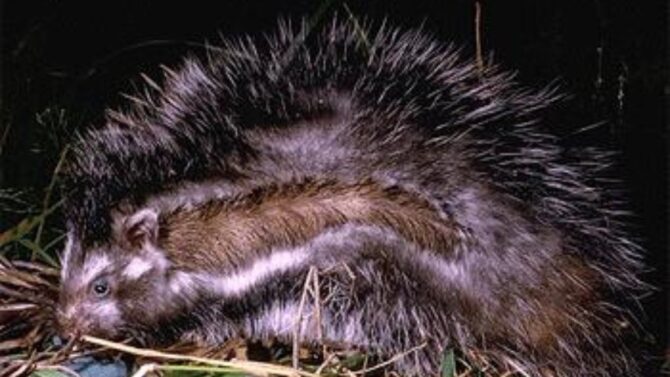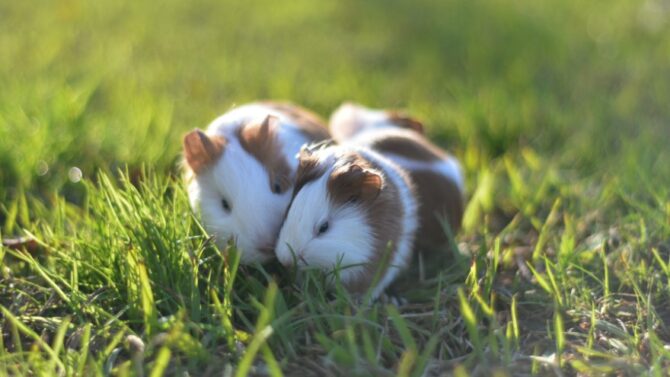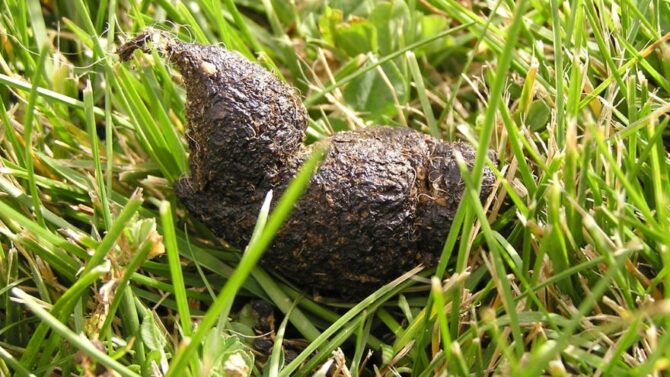Rodents are widespread, far more than the average person thinks. While you may only imagine rats and mice, in reality, there are over 2,000 different rodent species.
It is the largest group of mammals, proving there’s a lot more to these animals than we think.
Besides rats and mice, other animals that can be classified as rodent species include hamsters, chinchillas, squirrels, prairie dogs, and North American beavers.
Here’s a list of 20 different types of rodents spread in various parts of the world. We’ll also have an overview of what the group is about.
Rodents: Overview and Categories
All rodents fall under the order Rodentia, one out of many Mammalia order.
Other Mammalia order include the Carnivora, the chiropteran (bats), and the soriocomorpha (shrews, moles).
Rodents are widespread in all continents of the world except Antarctica and New Zealand.
While bats resemble rodents, they are a separate order. Rabbits are also no longer considered rodents but belong to the Lagomorpha order.1
There are three main rodent groups under which similar rodent types are grouped. We have the squirrels, the mouse-like rodents, and the cavy-like rodents.
20 Different Types of Rodents
1. House Mouse
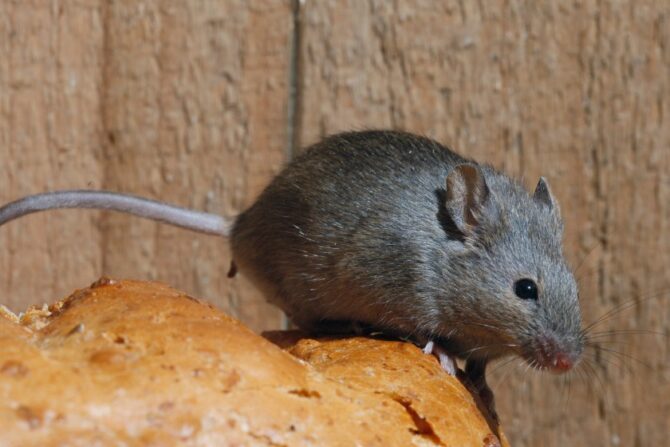
- Scientific Name: Mus musculus
- Range: Worldwide
- Habitat: Basements, attics, wall voids
- Conservation Status: Least Concern
The house mouse is a wild animal, strictly speaking. However, it shares a proximity with humans that makes it semi-tame.
Some individuals have been domesticated, while others are employed as laboratory specimens.
This species falls under the Mus genus and is the most abundant.
Other mouse species are the field mouse and the kangaroo mouse, both of which don’t fall under the Mus genus.
The house mouse is widespread, occurring in every part of the world except Antarctica.
Humans are responsible for the wide range of these rodents as they spread due to human travel.
They live in any available space in human dwellings, including basements, attics, barns, and storage boxes.
2. Golden Hamster
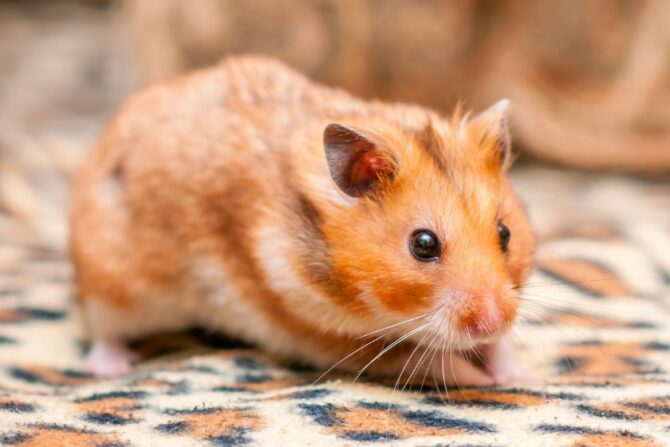
- Scientific Name: Mesocricetus auratus
- Range: Syria and Turkey
- Habitat: Burrows
- Conservation Status: Endangered
The Golden hamster is the most common in the Cricetinae subfamily, which contains 19 species.
Its main range is Syria and Turkey, but because of its popularity as a household pet, it has spread to other parts of the world, including the United States.
It is also known as the Syrian hamster. Besides being a pet, it is also good for scientific studies.2
In the wild, this rodent lives in burrows. As a domestic pet, the parent constructs a home in a cage for it to live.
The Golden hamster is an omnivore, feeding on seeds, fruits, invertebrates, and even carrion.
It is highly territorial in the wild, even against its young. Sadly, loss of habitat and human activities have led to its being Endangered in the wild.
3. North American Beaver
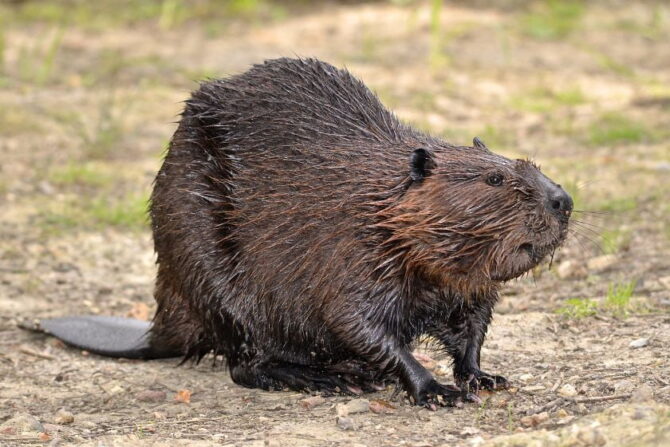
- Scientific Name: Castor Canadensis
- Range: North America
- Habitat: Ponds, lakes, rivers
- Conservation Status: Least Concern
There are two beaver species currently in existence, the North American beaver and the Eurasian beaver.
The North American beaver is a native of the continent from which it got its name.
It is a large rodent and semi-aquatic, inhabiting different water bodies. It is similar to its European counterpart but tends to be smaller.
Beavers are known for their building abilities. Using tools like rocks, twigs, and sticks, beavers build homes called “lodges.”
They also make dams to have a pond on which they can build their homes. These animals are nocturnals and good swimmers.
4. Guinea Pig
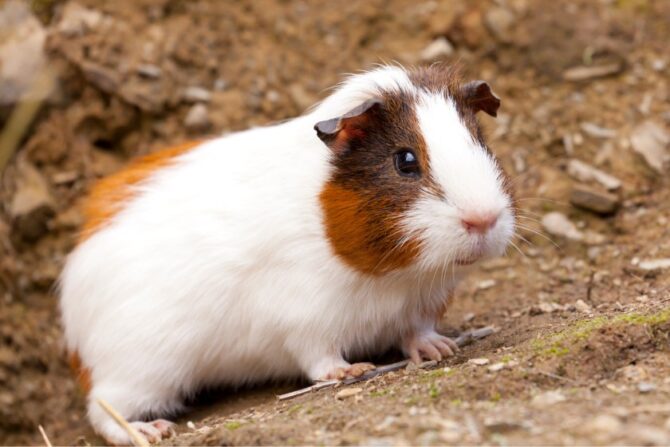
- Scientific Name: Cavia porcellus
- Range: South America
- Habitat: Mountains
- Conservation Status: Domesticated
The guinea pig is a popular domestic rodent and an asset for medical research.3
It is also called the cavy or the domestic cavy by breeders, though scientists prefer the name guinea pig.
The latter is confusing, however. The guinea pig is not from Guinea, nor is it a pig.
In the wild, the guinea pig used to inhabit mountains. They have since become domesticated, which changed their habitat to human spaces.
Guinea pigs were first meant to be livestock, but they have since gone beyond that.
5. Greater Capybara
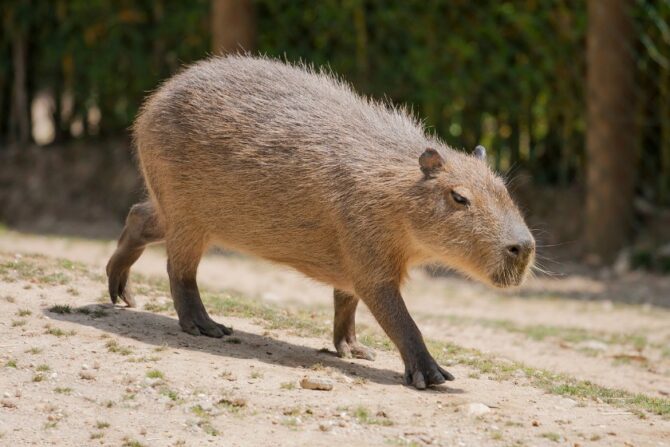
- Scientific Name: Hydrochoerus hydrochaeris
- Range: South America
- Habitat: Rivers, lakes, marshes, ponds, swamps
- Conservation Status: Least Concern
The greater capybara is a native of South America, and it is considered the largest living rodent.
With a weight of over 100 pounds and a length that gets to 4.40 feet, the greater capybara is around the size of a small dog.
It is one of two capybara species, the other being the lesser capybara.
The greater capybara inhabits areas close to water bodies, similar to the beaver.
These animals don’t build lodges and dams, though. Because of their proximity to water, they are great swimmers.
While you might find one alone, they often live in groups. They are herbivorous.
6. South African Springhare
- Scientific Name: Pedetes capensis
- Range: South Africa
- Habitat: Sandy plains
- Conservation Status: Least Concern
The South African springhare is not a hare, despite the name. Rather, it is a terrestrial rodent that lives in the sandy plains of South Africa.
The springhare is a jumper, which inspired its name. It is often compared to a kangaroo.
This rodent is nocturnal and would often retreat to its burrows during the day.
They often dig these burrows in their preferred habitat during the wet season, as it is easier to dig.
They are herbivorous, feeding on plant material like roots, stems, seeds, and leaves.
7. Dark Kangaroo Mouse
- Scientific Name: Microdipodops megacephalus
- Range: United States
- Habitat: Loose sand, gravel
- Conservation Status: Least Concern
The dark kangaroo mouse is one of two kangaroo mouse species, the other being the pale kangaroo mouse.
Both are found in the United States. The dark kangaroo specifically stays in the states of California, Idaho, Nevada, Oregon, and Utah.
Though not a part of the Mus genus, the kangaroo mouse is termed so because of its size and resemblance to the actual mouse.
It is a good jumper as well, which explains the “kangaroo” attached to the name. Diet includes seeds and insects.
8. Botta’s Pocket Gopher
- Scientific Name: Thomomys bottae
- Range: North America
- Habitat: Woodlands, scrublands, chaparral
- Conservation Status: Least Concern
The Botta’s pocket gopher is a member of the pocket gopher family known as Geomyidae.
The latter contains around 41 species, all of which are found in North and Central America.
The Botta species live in the western side of North America. Preferred habitats include scrublands and woodlands.
Pocket gophers are known for tunneling, and Botta is not an exception.
This species can neither be classified as diurnal nor nocturnal but stays active for about nine hours every day.
The Botta’s pocket gopher was named in honor of Paul-Emile Botta.4
9. White Spined Atlantic Spiny Rat
- Scientific Name: Trinomys albispinus
- Range: Brazil
- Habitat: Semi-arid forests
- Conservation Status: Least Concern
The white-spined Atlantic spiny rat falls under the Trinomys genus, the scientific name for the Atlantic spiny rat.
They, in turn, are classified in the Echimyidae family, otherwise known as the spiny rat.
The latter is a native of South America, with the white spined coming from Brazil.
An inhabitant of semi-arid forests, the white spined is fit for dry weather— which can’t be said for other spiny rat species.
It is one of the smallest spiny rats, with a length of 8.3 inches.
10. Greater Cane Rat
- Scientific Name: Thryonomys swinderianus
- Range: Sub-saharan Africa
- Habitat: Reed beds, riverbank
- Conservation Status: Least Concern
The greater cane rat is also known as a grasscutter in places like Nigeria and Ghana.
This rodent is a native of Sub-saharan Africa, where it is regarded both as an agricultural pest and food.
The greater cane rat is large, and it figures amongst the largest rodents in Africa.
These rats live in groups, all headed by a single male. As nocturnal creatures, they hardly show up during the day.
These animals make grunting sounds when afraid, and they’re known to live close to the waters.
11. North American Porcupine
- Scientific Name: Erethizon dorsatum
- Range: North America
- Habitat: Coniferous and mixed forests
- Conservation Status: Least Concern
The North American porcupine is a member of the Erethizontidae family, otherwise known as the New World porcupines.
It stays in the eastern part of North America, ranging from Canada to some parts of the United States. Preferred habitats include coniferous and mixed forests.
This is the second largest rodent in North America after the North American beaver and the largest New world porcupine.
It is an arboreal creature but is known to fall off the tree. Its coat has about 30,000 quills used both for defense and as protection against the cold.
12. Crested Porcupine
- Scientific Name: Hystrix cristata
- Range: North Africa, Sub-saharan Africa, Italy
- Habitat: Hills, rocks
- Conservation Status: Least Concern
The crested porcupine is also known as the African crested porcupine, and it belongs to the Old World porcupine family known as Hystricidae.
It is widespread across North Africa and the Sub-saharan regions, being found in countries like Benin Republic, Algeria, Sudan, Morocco, and Nigeria. It also lives in Italy.
The crested porcupine can be dangerous, but only when it feels threatened.
It can stab its attacker by charging through the back, and these attacks have proved to be fatal to larger predators and even humans.
13. Norway Lemming
- Scientific Name: Lemmus lemmus
- Range: Norway
- Habitat: Tundra, Felis
- Conservation Status: Least Concern
The Norway lemming is also known as the Norwegian lemming, already revealing its native country.
All lemmings are under the subfamily Arvicolinae alongside other rodents (voles and muskrats). The Norway lemming has a lot of relatives.
Lemmings are popular due to a popular belief that they commit suicide, a belief that has since been written off as a myth.
This myth stems from their migratory behavior. The Norway species is herbivorous, feeding on grasses, sedges, and moss.
14. Maned Rat
- Scientific Name: Lophiomys imhausi
- Range: Africa
- Habitat: dry forests, woodlands
- Conservation Status: Least Concern
The maned rat is a native of East Africa, and as such, it is sometimes termed the African crested rat.
It resembles the porcupine, but one can easily tell both animals apart by simply observing them.
The maned rat has a variety of habitats, including dry forests and woodlands.
This rat is known for being the only poisonous rodent in the world, capable of killing a dog.5
It doesn’t produce the poison internally but places it on the skin from toxic plants.
These rodents aren’t aggressive, however. They are very social among themselves, and some are kept in captivity.
15. Bank Vole
- Scientific Name: Myodes glareolus
- Range: Europe, Asia
- Habitat: Woodland, hedgerows
- Conservation Status: Least Concern
The bank vole inhabits the woodlands and hedgerows of Europe and northeastern Asia.
One country you’re sure to find in Great Britain. It also stays in Ireland, but it was introduced there. In Asia, you’d find the bank vole in countries like Siberia.
The bank vole is active both during the day and at night, making it neither fully diurnal nor nocturnal.
It is also out during all the seasons, including winter. As a herbivore, the bank vole feeds on leaves, grasses, buds, roots, fruits, etc.
16. Brown Rat
- Scientific Name: Rattus norvegicus
- Range: Worldwide
- Habitat: Urban areas
- Conservation Status: Least Concern
The brown rat goes by many other names like the street rat, the common rat, the wharf rat, the Hanover rat, and others.
This is a widespread rat species that possibly originated from China and has since gotten to other continents in the world except for Antarctica.
The brown rat lives around humans and is the most popular rat species in Europe and North America.
Only very few stay away from human dwellings. The brown rat is considered a vermin in different parts.
17. Four-toed Jerboa
- Scientific Name: Scarturus tetradactyla
- Range: Africa
- Habitat: Salt marshes, deserts
- Conservation Status: Data deficient
The four-toed jerboa is a member of the Dipodidae family, all of which are termed jerboas.
As its name implies, the four-toed jerboa is known for having four toes. It is a native of Egypt and Libya, inhabiting the salt marsh and desert in those regions.
Similar to another jerboa, the four-toed species is a hopper, its main moving method.
It is also known to have large ears and long legs. Besides hopping, this rodent is known to stand upright, and the tail serves as balance.
18. Asiatic Long-tailed Climbing Mouse
- Scientific Name: Vandeleuria oleracea
- Range: Asia
- Habitat: Grasslands, forests, shrublands
- Conservation Status: Least Concern
The Asiatic long-tailed climbing mouse is a native of Asia, specifically in the South and Southeast areas.
Countries you can find include China, India, Nepal, Myanmar, and Cambodia.
It resembles the house mouse in many ways but doesn’t stay close to human spaces. Its preferred habitat includes shrublands, forests, and grasslands.
The long-tailed climbing mouse is a carrier known to spread the Kyanur Forest Disease (KFD) borne by ticks.
19. Field Mouse
- Scientific Name: Apodemus sylvaticus
- Range: Europe, Asia
- Habitat: Forests, grasslands, fields
- Conservation Status: Least Concern
The field mouse is also known as the wood mouse, long-tailed field mouse, common field mouse, and European wood mouse.
It is a native of both Europe and Asia, being found in countries like Ukraine, Albania, Algeria, Andorra, Belarus, and Bulgaria.
The field mouse is nocturnal, and this might be a tactic to avoid predators. It inhabits the outdoors, staying in forests, grasslands, and fields.
They stay a lot in hedgerows, even preferring them to woods. This rodent is primarily a seed eater, though it can feed on small invertebrates.
Field mice are considered dangerous because it carries the hantavirus.6
20. Gambian Pouched Rat
- Scientific Name: Cricetomys gambianus
- Range: Africa
- Habitat: Crevices, holes, hollow trees, termite mound
- Conservation Status: Least Concern
The Gambian pouched rat is also known as the African giant pouched rat and belongs to the genus of giant pouched rats known as Cricetomys.
It is a native of Africa, but despite the name, it isn’t endemic to the Gambia.
It lives in many Sub-saharan African countries like Senegal, Kenya, Mozambique, and Angola.
In the United States, the Gambian pouched rat is considered an invasive species and is banned because of its role in the outbreak of monkeypox.7 It is a pet in several other places.
Final Thoughts
Different rodent species vary greatly in their physical appearance, behavior, and habitat.
From the tiny pygmy mouse to the massive capybara, there is no shortage of fascinating rodents to discover.
Some, like the domesticated hamster, have become popular pets, while others, like the destructive Norway rat, are considered pests.
There are more rodent types than we’ve highlighted on this list, but this should give you an idea of the diversities that exist within this mammal group.
References & Notes
- Is a Rabbit a Type of Rodent? New Ulm Vets.
- Golden Syrian hamster as a model to study cardiovascular complications associated with SARS-CoV-2 infection. Elife.
- Guinea pigs in medical research. Understanding Animal Research.
- Paul-Émile Botta. Britannica.
- For Rats That Coat Themselves In Poison, These Rodents Are Surprisingly Cuddly. NPR.
- Hantavirus. CDC.
- Rats Confirmed as Monkeypox Source. The Washington Post.
